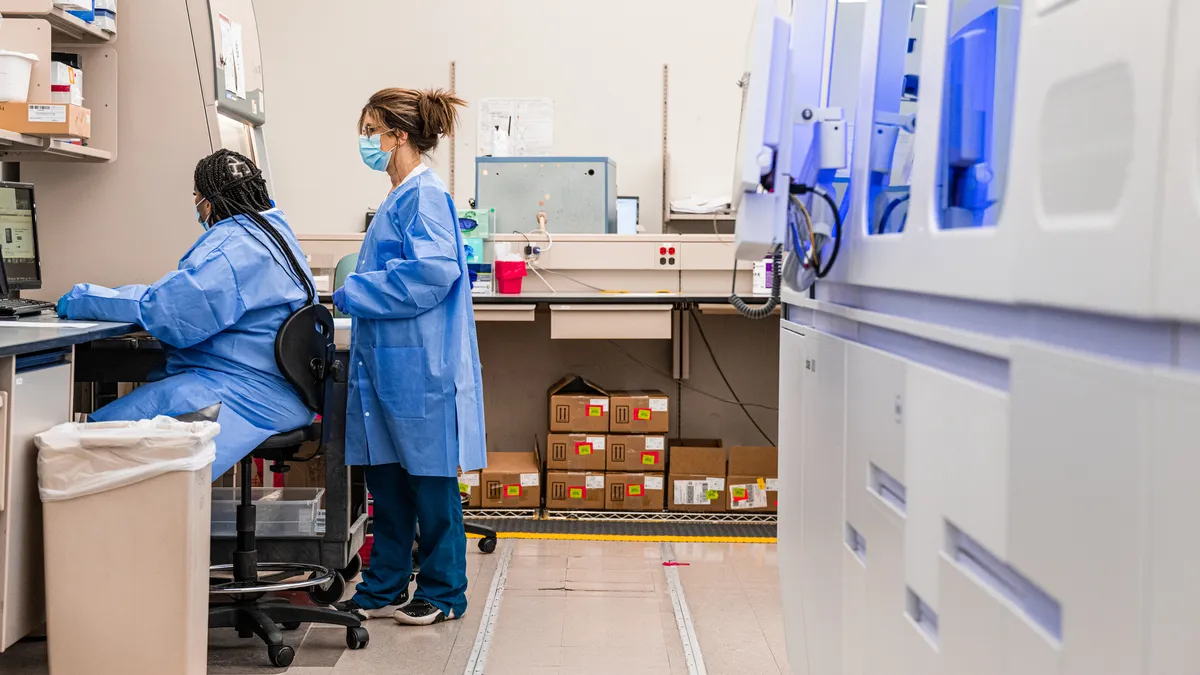Dive Brief:
- The rate of substituted or invalid drug tests — an indication of tampering to hide drug use — rose more than six-fold in 2023 versus the prior year, according to a Quest Diagnostics analysis of 9.8 million anonymized workforce drug tests. The rate was the highest the company has seen in 30 years of reporting, Quest Diagnostics said.
- Marijuana was the most commonly found drug, with a positive appearance in 4.5% of urine drug tests (amphetamines, the next most common drug, appeared in 1.5% of tests). While positivity in the general U.S. workforce increased slightly, it decreased slightly for the federally mandated, safety-sensitive workforce, Quest Diagnostics found. Post-accident positivity and positivity among office workers continues to rise, however.
- “It isn’t clear why we’re seeing an increase in overall and marijuana drug positivity in office workers, but it isn’t a stretch that a combination of unprecedented stress and isolation during the pandemic with work-from-home policies during and post-pandemic may be contributing to greater drug use in employees in traditionally white-collar fields,” Sam Sphar, Quest Diagnostics’ vice president and general manager for workforce health solutions, said in a statement.
Dive Insight:
The rise in marijuana use — and subsequent rise in attempts to conceal it — could be attributed to a mix of factors. In addition to the conditions of stress and isolation pointed to by Sphar, an increase in legalization and destigmatization across the U.S. may be normalizing cannabis use alongside legal and more widely accepted drugs, like alcohol.
Recreational marijuana use is now legal in 24 states, and according to Pew research from April, nearly 6 in 10 U.S. adults say the drug should be legal for both medical and recreational use — a dramatic increase over the past two decades. Quest Diagnostics found that drug tests from states with legal recreational use returned a positivity rate of 5.8%, compared to a rate of 3.3% for states where marijuana is not legal in any capacity, and a 4.5% national average.
Some employers are embracing this cultural change. In 2021, Amazon said it would end pre-employment marijuana drug testing for most positions. “We will no longer include marijuana in our comprehensive drug screening program for any positions not regulated by the Department of Transportation, and will instead treat it the same as alcohol use,” Dave Clark, a former Amazon executive, said in an announcement. “We will continue to do impairment checks on the job and will test for all drugs and alcohol after any incident.”
Some predicted a “ripple effect” following Amazon’s announcement. This prediction appears to be bearing out, apparently as much a result of talent attraction and retention concerns as a desire to reflect changing cultural norms. According to law firm Ogletree Deakins, nearly 16% of respondents to a 2022 survey about employment practices said they’d eliminated their pre-employment drug testing “to help with recruiting and hiring challenges.”
While society appears to be quickly moving toward broader acceptance of marijuana use, Quest Diagnostics pointed out that implications still exist beyond the realm of culture. Although the positive drug test rate dropped slightly for safety-sensitive roles, attempts to tamper with samples rose similar to the general trend, with substituted specimens increasing 370% and invalid rates increasing 37%.
“It is possible that our society’s normalization of drug use is fostering environments in which some employees feel it is acceptable to use such drugs without truly understanding the impact they have on workplace safety,” Suhash Harwani, senior director of science for workforce health solutions at Quest Diagnostics, said in a company press release.













